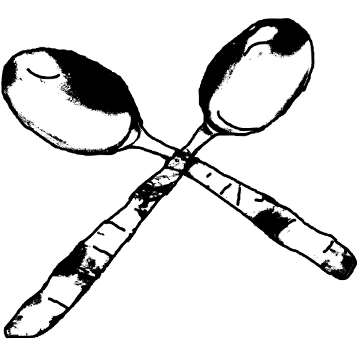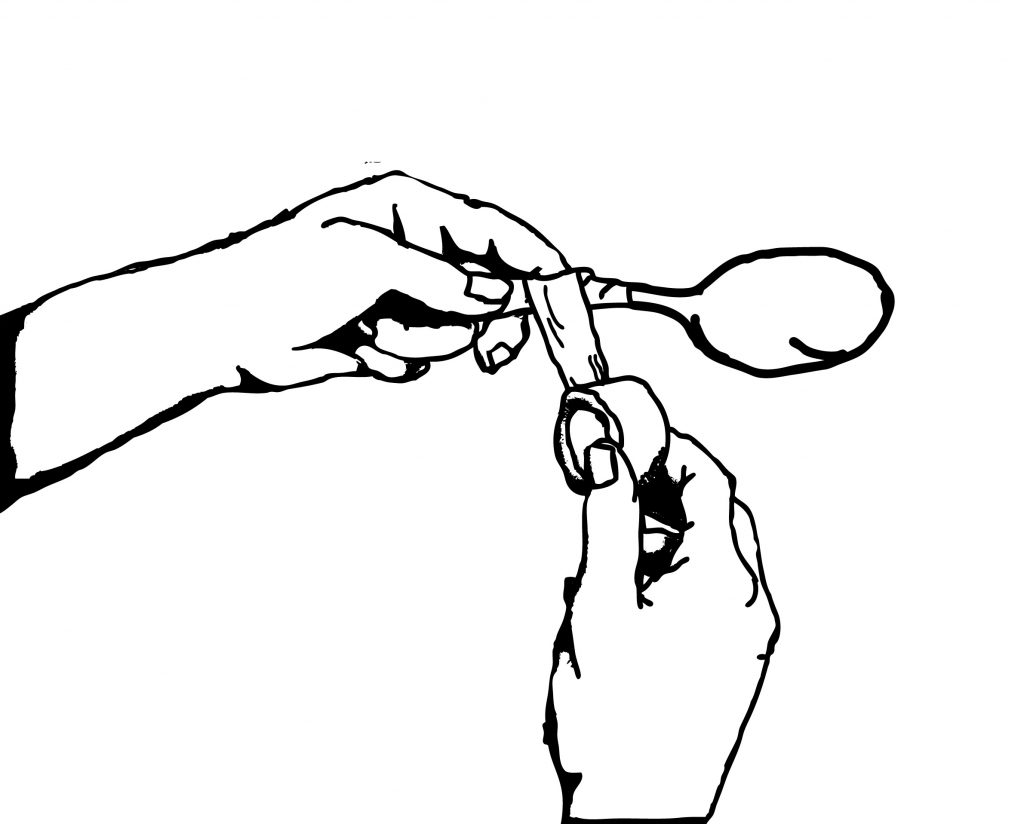There have been spoon players since before written history. Prehistoric rock drawings and pottery as early as the 4th millennium depict dancing figures with curved blades in their hands. Spoons belong to a class of instrument called concussion idiophone. This general class of instruments includes the oldest instruments known to man. Spoons themselves are prehistoric, and you can say that there have been spoon players since around the invention of the spoon.
Many ancient cultures played spoons. Ancient Egyptians, Greeks, and Romans all played spoons and a variation of the spoons called the rattle bones or the rhythm bones. Rhythm bones are essentially a pair or set of three bones, usually sheep and cattle bones, placed in the hand parallel to the palm with the convex sides facing each other. The bones are placed between each finger, with one finger being used like a hinge, and the moving one’s wrist so that in such a way that the bones hit each other. Egyptians, Greeks, and Romans all played spoons and bones in their battle marches and some even speculate that human bones were used. During the crusades, when these armies were marching the clicking or the bones and spoons meant to their enemy that “the pagans were coming” and it was time to prepare for battle, or to even run and hide.

SPOON PLAYING AROUND THE WORLD
Spoon playing has a place in music throughout different regions of the world, and especially in Europe. In Great Britain, the spoons are often played accompanying a fiddle during traditional music. British actor Sylvester McCoy, who is well-known for playing the 7th incarnation of Doctor Who, was an excellent spoon player. Aside from playing spoons on Dr. Who, he played spoons during his role as King Lear. However, presently the only spoon player registered with the United Kingdom Musicians Union is British reggae singer Duncan Campbell. French-Canadians have a spoon playing tradition. Using wooden spoons connected, and carved out of a single block of wood. Spoons in this region are often played accompanying a fiddle or accordion. Primary traditional percussion included spoons and clogging. Greek folk music traditions also contain spoon playing. Spoons as an instrument are known as kautalakia, and are very often played within folk dance. Spoons are often used in wedding ceremonies.
Russians refer to spoons as lozhki. Some say that the spoons are the most popular folk instrument in Russia. Russian spoon playing is very different from American and British styles of playing spoons. There is a wide range of spoons tricks and techniques within Russian playing. Multiple spoons are used in a variety of ways. Sometimes spoons are often placed in each hand, or even several pairs of spoons in each hand. Some Russian spoon players can be seen sewing spoons onto the outside of their pants or shirts, to knock the spoons in their hand against. You can find spoon playing, and variants of spoon playing, all over the world. Another example is how the Eastern Slavs used musical spoons in war, hunting ceremonies, and traditional music. China, Turkey, Ireland, Scotland, and parts of Africa all carry similar types of traditions.
Notable spoon players are Artis the Spoonman, Sam Spoons, Deb “Spoons” Perry, Jo May, and Tran Quang Hai. Keeping these ancient art forms is important to not only our own culture but to the world. The playing of spoons is keeping these ancient traditions alive, and forming new ones.
Happy spooning,


